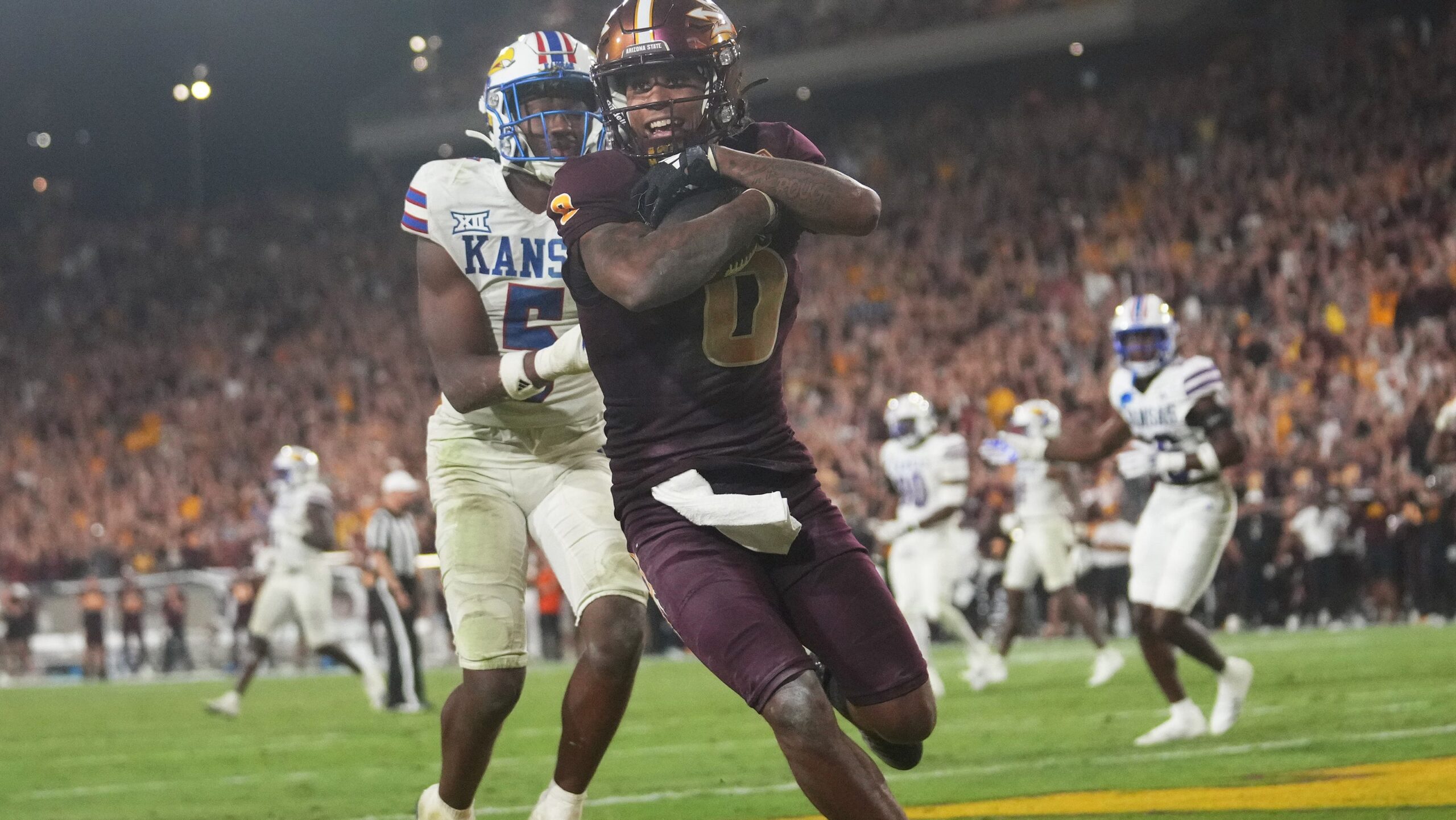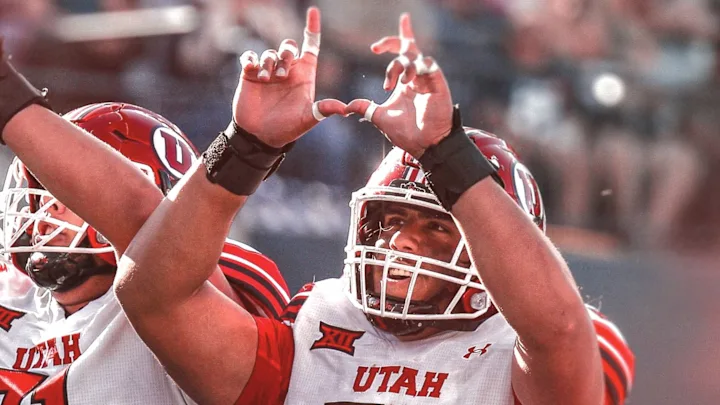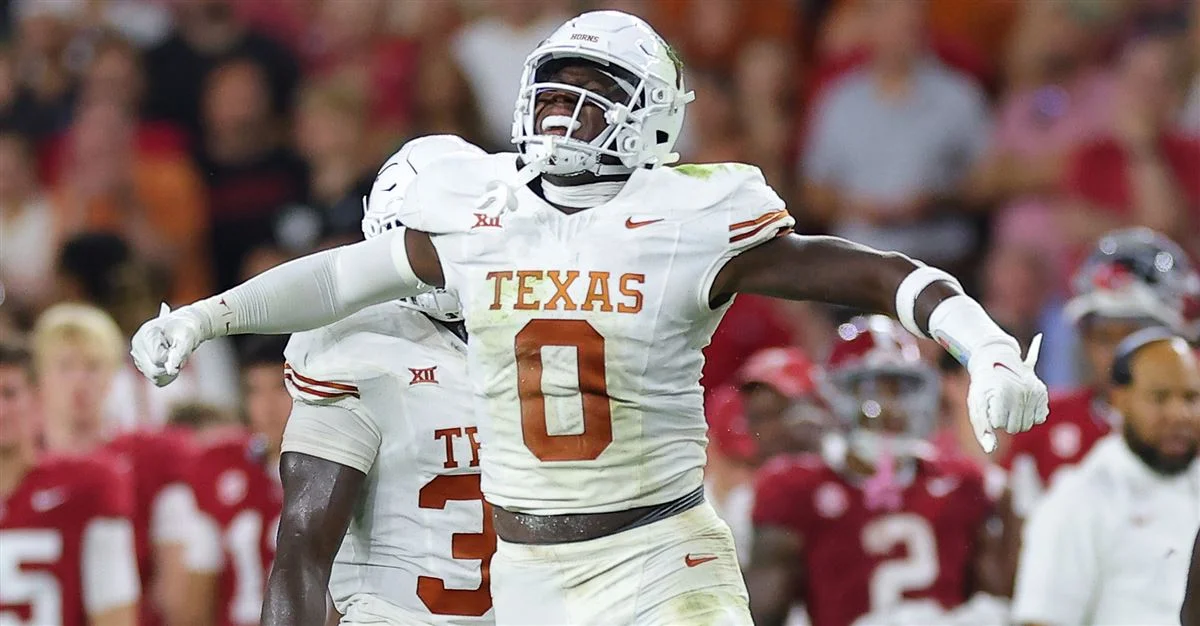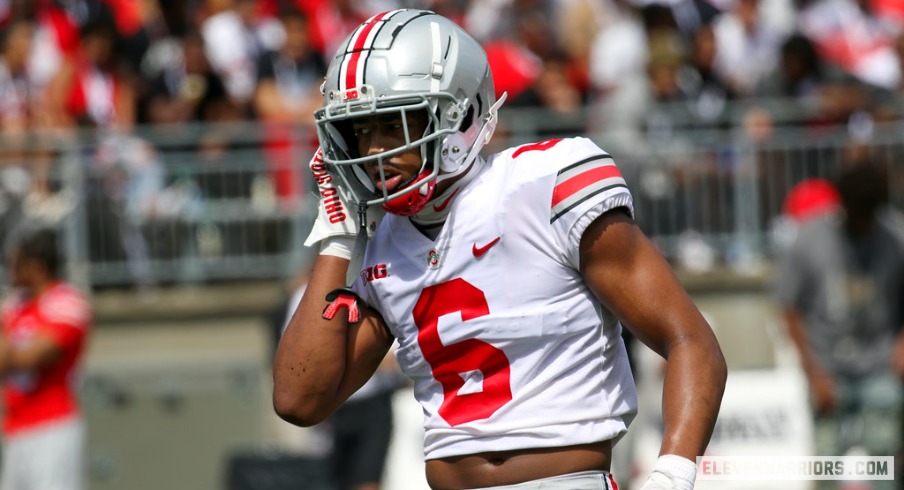By Charlie Campbell.
Send Charlie an e-mail here: [email protected]
Follow Charlie on Twitter @draftcampbell for updates.
This page was last updated March 27, 2013. Follow me @walterfootball for updates.
Position Review: Offensive Tackles
Offensive Tackle Class
Early-round talent: A-
Mid-round: B+
Late-round: B-
Overall grade: B+
2012 prospects vs 2013
Matt Kalil > Luke Joeckel
Riley Reiff < Eric Fisher
Mitchell Schwartz < Lane Johnson
Cordy Glenn < D.J. Fluker
Jonathan Martin < Menelik Watson
Mike Adams > Kyle Long
Donald Stephenson < Justin Pugh
Lamar Holmes > Brennan Williams
This year’s draft class has a stronger group of tackles than the 2012 NFL Draft. Only two went in the first round last year. The 2013 NFL Draft could have five to seven first-round tackles. Plus, the 2013 tackle class is likely to feature Luke Joeckel as the No. 1 overall pick.
If you were to merge the two classes, Kalil would go first. Reiff would go below Joeckel, Fisher and Johnson but ahead of Fluker.
Adams, Schwartz, Glenn and Martin would come after Watson, but that everyone in that group is safer and more polished as a prospect than Long. However, Pugh and Long grade out in the second round with that group, so they’re still pretty equal. Stephenson and Holmes would go behind Pugh.
Williams is harder to evaluate because he’s injured, but prior to the injury, he was a force as a right tackle. Stephenson was a more polished prospect, so Williams would fit between Stephenson and Holmes. However, Holmes has real upside and could turn into something special in the future.
There are some interesting and big upside prospects outside of these eight players for the 2013 NFL Draft. Arkansas Pine-Bluff’s Terron Armstead, Louisiania Tech’s Jordan Mills, Florida’s Xavier Nixon and LSU’s Chris Faulk could be potential steals to be had on the second or third day.
Safest Pick: Luke Joeckel, Texas A&M

Joeckel is a very safe pick. He proved that in 2012 when he shut down a number of good pass-rushers including LSU’s Sam Montgomery and Auburn’s Corey Lemonier. Joeckel is a very good athlete with quick feet, good length, strength and agility. He is a well-rounded blocker and looks like a lock to turn into a good starting left tackle in the NFL.
Biggest Bust Potential: D.J. Fluker, Alabama

Fluker could be a top-20 pick, which seems risky to me. There is no doubt that he is a dominant run-blocker, but he gave up a lot of sacks during the 2012 season. His pass blocking is a real weakness. Fluker was beaten for two sacks against Western Kentucky and allowed other pass pressures. The junior also allowed sacks against Mississippi State and Missouri.
Fluker had double-team help for the SEC Championship Game, but was still beaten by Georgia’s Jarvis Jones for a sack. If Fluker can’t turn into a good pass-blocker, he may have to move inside to guard.
Offensive Tackles Rankings by Attributes
Pass Protection:
NFL prototype: Joe Thomas, Browns
- Luke Joeckel
- Eric Fisher
- Lane Johnson
- Justin Pugh
- Menelik Watson
- Kyle Long
- Brennan Williams
- D.J. Fluker
Recap: Franchise left tackles have to be rock solid in pass protection. Most teams feature a right-handed quarterback, so the left tackle has to be trusted to shut down pass-rushers coming from the blind side. Joe Thomas is the top offensive tackle in the NFL and is the current gold standard for a franchise left tackle.
Joeckel is the best and most proven pass-protector in this draft class. He spent the past three seasons as an excellent pass-blocker for the likes of Ryan Tannehill and Johnny Manziel. Joeckel has improved his game each year with better feet and technique. He looks like a future franchise left tackle who can be relied on to protect a quarterback.
Fisher is also a superb pass-blocker. There were some doubts entering the Senior Bowl because he played at Central Michigan, but those doubts were laid to rest as he had a dominant week in Mobile. Fisher has quickness, length and strength. He should be a good pass-blocker in the NFL.
Johnson also had a strong Senior Bowl performance to help his stock. He did a fine job in pass protection for Landry Jones the past two seasons. Johnson is very athletic with speed. He has the most NFL upside of these tackles due to his an elite athleticism.
Pugh’s best trait is his pass protection. He was a standout pass-blocker for Syracuse the past few years. Push had a disappointing Senior Bowl, but he has a lot of good college tape containing Ryan Nassib’s blind side.
Long and Watson have a lot potential as pass-blockers, but need refinement. They both are tremendous athletes who have quick feet and good agility. After some coaching, Long and Watson should be good pass-protectors in the NFL.
Prior to tearing his labrum, Williams was having a good year protecting his quarterback. Fluker’s clearly the worst pass-protector of this group. His 2012 struggles were outlined above.
Run Blocking:
NFL prototype: Joe Staley, 49ers
- D.J. Fluker
- Menelik Watson
- Brennan Williams
- Eric Fisher
- Luke Joeckel
- Lane Johnson
- Kyle Long
- Justin Pugh
Recap: Fluker is, by far, the best run-blocking tackle in the 2013 NFL Draft. Its not even close. He is an animal in the ground game and has the ability to blast open holes. His power allows him to push defensive linemen around and move them out of their gap with east. Fluker should be an impact run-blocker immediately in the NFL.
Watson and Williams are also forces on the ground. Their teams had a lot of success running behind them. Watson and Williams look like right tackles who will be go-to run-blockers in the ground game and skilled in short-yardage situations. If Watson is moved to left tackle, in time, he could turn into one of the better run-blocking left tackles in the NFL.
Fisher has good power and can dominate in the ground game. He could use more strength, but that shouldn’t be a problem for him. Joeckel improved his run blocking from 2011 to the point that he was very effective this year. Johnny Manziel and the Aggies’ stable of backs did well going behind him.
Johnson wanted to show scouts at the Senior Bowl that he could run block and did better than most expected. Johnson could use more bulk and has the frame to get bigger. He has potential, but will need more development.
Long was a good run-blocker in college, but will need to continue to improve his ability to run block in the NFL. Oregon’s offense won’t translate well to a lot of pro schemes, so he has a fair amount to learn.
Pugh (6-4, 307) needs to improve his run blocking. He’s clearly the weakest run-blocker in this class and needs to increase his strength. Defensive linemen could too easily fill their gaps going against him. Powerful five-techniques in 3-4 defenses could give Pugh some problems.
Feet:
NFL prototype: D’Brickashaw Ferguson, Jets
- Lane Johnson
- Luke Joeckel
- Eric Fisher
- Menelik Watson
- Kyle Long
- Justin Pugh
- Brennan Williams
- D.J. Fluker
Recap: This is a tough one. Over the long-term, NFL career perspective, Johnson should have the best feet. Oklahoma moved him around during his career; he shifted from tight end to defensive end to right tackle and, finally, left tackle. Johnson just needs more developmental time, but he is so fast and light on his feet. Johnson is so quick getting depth in his drop to head off speed-rushers. He could, in time, end up with some the best feet of any tackle in the NFL. As rookies next fall, the best feet in the 2013 NFL Draft belong to Joeckel. He is very light on his toes and is very fast shuffling his feet to get in position to head off speed-rushers. Johnson has more upside, but Joeckel has great feet.
Fisher isn’t far behind the top two. He showed superb footwork at the Senior Bowl. Watson is an agile athlete with a basketball background. He is very quick and light on his toes. Like Johnson, Watson has big upside to develop.
The same goes for Long. There is no doubt that he is fast for an offensive lineman. Long showcased that in the 2012 season, at the Senior Bowl and at the Combine. He should continue to develop his footwork in the NFL but has a lot of potential.
Pugh has pretty quick feet, and he clearly has spent a lot of time working on the speed of his drop.
There is a dropoff to Williams. He is heavier and doesn’t have the feet to play left tackle.
Fluker is a bit of a mystery as he displays quick feet at times, but has streaks during which he gets sloppy and heavy-footed. If Fluker trims some weight and increases his stamina, his footwork could automatically improve.
Quickness:
NFL prototype: Trent Williams, Redskins
- Lane Johnson
- Luke Joeckel
- Eric Fisher
- Kyle Long
- Menelik Watson
- Justin Pugh
- D.J. Fluker
- Brennan Williams
Recap: All of these tackles have quickness, but some are better at using it than others. Narrowly, Johnson is the quickest tackle in the class; Joeckel is a close second. Each is fast to get out of his stance and can fire into the second level of the defense. Both have good speed to move laterally, too. Quickness will be assets in the NFL for Johnson and Joeckel.
Fisher displayed real quickness as he closed out his senior season and at the Senior Bowl. Fisher definitely won’t be a plodder in the NFL. Long is a fantastic athlete and used his quickness to hit a lot of blocks in space for Oregon. He can fly to the second level off the snap. Long’s combination of speed, athletic ability and size is why many project him moving to tackle from guard in the NFL.
Watson also is very quick to the second level. He moves well in space and can get downfield. Pugh displayed nice quickness in college, but seemed slowed down at the Senior Bowl. His speed would translate better on the inside.
Just like the feet, Fluker shows good quickness at times, especially in run blocking. He has to get faster at getting depth in his pass-blocking drop. It is a clear weakness for him entering the NFL.
Williams has enough speed to be starting right tackles. He should be good to get to blocks on the second level and handle most edge-rushers.
Zone-Blocking Scheme:
NFL prototype: Duane Brown, Texans
- Lane Johnson
- Luke Joeckel
- Eric Fisher
- Kyle Long
- Menelik Watson
- Justin Pugh
- Brennan Williams
- D.J. Fluker
Recap: All of these tackle prospects could execute in a zone-blocking system. They all have enough athletic ability and the speed to play it. Joeckel and Johnson are the best fits because they are so fast while being extremely mobile.
Fisher and Long would be good fits as well. Long had to move off the line a lot at Oregon, so going to a zone-blocking system would probably be the easiest transition for him.
Watson definitely has the agility, speed and mobility to thrive in a zone-blocking system. That could be his best fit in the NFL.
Pugh would probably fit a zone-blocking scheme better than anything else. It would really help him out to be in a system that puts an emphasis on movement, rather than power, at the point of attack. Pugh could also fit as a guard in a zone-blocking system.
Williams isn’t a great fit for a zone-blocking scheme, but could make the transition.
Even though Fluker has a massive body and is very strong, he could handle a zone-blocking system. Alabama’s superstar offensive line did a bit of everything, so Fluker has some previous experience. He definitely is able to move laterally and hit blocks on the second level.
Power-Man Scheme:
NFL prototype: Joe Thomas, Browns
- D.J. Fluker
- Luke Joeckel
- Eric Fisher
- Brennan Williams
- Menelik Watson
- Lane Johnson
- Kyle Long
- Justin Pugh
Recap: Fluker is definitely the most natural fit for a power-man scheme. He blasts defenders off the ball and routinely provides big holes to run through. Many NFL offensive line coaches will see Fluker as the prototypical power-man run-blocker for right tackle.
Joeckel has played in a power scheme and has had success. The junior was definitely more effective this year and had improved his technique. There would be no problems with him in a power-man system.
Fisher has the makings to be a good tackle in a power-man scheme. He could use a little more bulk, but after some time in an NFL strength and conditioning program, he could thrive in a power-man scheme.
Williams and Watson are strong tackles that could be effective in a power scheme.
If Johnson is drafted into a power-man scheme, he should add 10-15 pounds of muscle. He is currently hiding 303 pounds, and he definitely could add to that weight in an NFL strength and conditioning program. Johnson would take a little more time to develop, but eventually he should be fine in a power scheme.
Long (6-6, 313) has the physical build to play in a power scheme, but he is very raw. Long could be a force at the point of attack after some time getting coached up.
Pugh looks like a bad fit for a man-blocking system. He doesn’t have the strength for it right now. Pugh struggled with physical defensive linemen at the Senior Bowl and they had success bull rushing him. It makes a lot more sense for him to play in a zone scheme.
Pulling:
NFL prototype: Ryan Clady, Broncos
- Luke Joeckel
- Lane Johnson
- Kyle Long
- Eric Fisher
- Menelik Watson
- D.J. Fluker
- Brennan Williams
- Justin Pugh
Recap: Each member of this group has the ability to pull. The Aggies had success when they pulled Joeckel. He can really do anything the coaches ask and should be able to pull well in the NFL. Johnson has good athletic ability to pull and hit blocks on the move. Long made a living of hitting blocks on the move at Oregon.
Fisher and Fluker both did well pulling in college. Fluker didn’t pull as much at Alabama as the left side did. He was more of a straight-ahead blocker with other linemen coming to his side. Fluker should have the ability to pull effectively in the NFL.
Watson and Williams were like Fluker in that they did more straight-ahead drive blocking than pulling in college. However, both players could end up doing more sweeping to the other side in the NFL.
Pugh is decent at pulling, but he doesn’t pack the punch at the point of attack like the other linemen.
Downfield:
NFL prototype: Joe Staley, 49ers
- Luke Joeckel
- Eric Fisher
- Lane Johnson
- Kyle Long
- Menelik Watson
- Justin Pugh
- Brennan Williams
- D.J. Fluker
Recap: Joeckel was great for Texas A&M on screen passes, end arounds and slip screens. He fired downfield to hit blocks on linebackers and defensive backs. The Aggies had a lot of variety in their offensive plays over the past three years, and Joeckel showed that he is a factor as a blocker downfield.
Fisher and Johnson were also good at getting out of the tackle box to hit blocks. Each of them should be better than most NFL left tackles at hitting blocks downfield. Fisher and Johnson are both fast and athletic.
Long, Watson and Pugh will have the ability to get downfield to hit blocks. They all are quick tackles who move well in space.
As right tackles Williams and Fluker do well for their position, but aren’t as good of downfield blockers as the other six. Williams and Fluker can be effective at getting downfield. Alabama had some success with screens to the right side behind Fluker. If his playbook calls for him to go downfield frequently, he should slim down.
|
|
NFL Picks - Dec. 13
NFL Power Rankings - Dec. 10
2026 NFL Mock Draft - Dec. 10
Fantasy Football Rankings - Sept. 1




